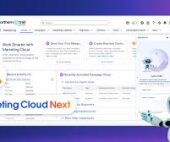Neuro-Symbolic AI: Bridging Neural Networks and Symbolic Processing for Smarter AI Systems
Neuro-symbolic AI integrates neural networks with rules-based symbolic processing to enhance artificial intelligence systems’ accuracy, explainability, and precision. Neural networks leverage statistical deep learning to identify patterns in large datasets, while symbolic AI applies logic and rules-based reasoning common in mathematics, programming languages, and expert systems.
The Balance Between Neural and Symbolic AI
The fusion of neural and symbolic methods has revived debates in the AI community regarding their relative strengths. Neural AI excels in deep learning, including generative AI, by distilling patterns from data through distributed statistical processing across interconnected neurons. However, this approach often requires significant computational resources and may struggle with explainability.

Conversely, symbolic AI, which relies on predefined rules and logic, has historically powered applications like fraud detection, expert systems, and argument mining. While symbolic systems are faster and more interpretable, their reliance on manual rule creation has been a limitation. Innovations in training generative AI models now allow more efficient automation of these processes, though challenges like hallucinations and poor mathematical reasoning persist.
Complementary Thinking Models
Psychologist Daniel Kahneman’s analogy of System 1 and System 2 thinking aptly describes the interplay between neural and symbolic AI. Neural AI, akin to System 1, is intuitive and fast—ideal for tasks like image recognition. Symbolic AI mirrors System 2, engaging in slower, deliberate reasoning, such as understanding the context and relationships in a scene.
Core Concepts of Neural Networks
Artificial neural networks (ANNs) mimic the statistical connections between biological neurons. By modeling patterns in data, ANNs enable learning and feature extraction at different abstraction levels, such as edges, shapes, and objects in images.
Key ANN architectures include:
- Convolutional Neural Networks (CNNs): Ideal for parallel processing, such as image analysis.
- Recurrent Neural Networks (RNNs): Effective for sequential data like text and speech.
- Transformers: A backbone for generative AI systems like ChatGPT and Google Gemini, enabling advanced automation in AI training.
Despite their strengths, neural networks are prone to hallucinations, particularly when overconfident in their predictions, making human oversight crucial.
The Role of Symbolic Reasoning
Symbolic reasoning underpins modern programming languages, where logical constructs (e.g., “if-then” statements) drive decision-making. Symbolic AI excels in structured applications like solving math problems, representing knowledge, and decision-making. Algorithms like expert systems, Bayesian networks, and fuzzy logic offer precision and efficiency in well-defined workflows but struggle with ambiguity and edge cases.
Although symbolic systems like IBM Watson demonstrated success in trivia and reasoning, scaling them to broader, dynamic applications has proven challenging due to their dependency on manual configuration.
Neuro-Symbolic Integration
The integration of neural and symbolic AI spans a spectrum of techniques, from loosely coupled processes to tightly integrated systems. Examples of integration include:
- Symbols In and Out: Symbolic inputs (e.g., text prompts) are processed by neural networks to generate outputs like text or code.
- Symbolic Analysis: Neural networks generate outputs refined by symbolic algorithms, as in DeepMind’s AlphaGo.
- Neural Structuring: Neural networks transform raw data into symbols for symbolic processing, such as in optical character recognition (OCR).
- Symbolic Labeling: Symbolic systems create labeled datasets to train neural models, improving efficiency.
- Full Integration: Symbolic reasoning engines enhance neural network workflows, exemplified by ChatGPT using Mathematica for advanced problem-solving.
History of Neuro-Symbolic AI
Both neural and symbolic AI trace their roots to the 1950s, with symbolic methods dominating early AI due to their logical approach. Neural networks fell out of favor until the 1980s when innovations like backpropagation revived interest. The 2010s saw a breakthrough with GPUs enabling scalable neural network training, ushering in today’s deep learning era.
Applications and Future Directions
Applications of neuro-symbolic AI include:
- Drug Discovery: Transforming chemical structures for efficient neural analysis.
- Autonomous Vehicles: Neural networks process camera data into symbolic 3D representations.
- Fraud Detection: Neural networks identify subtle fraud patterns, which are refined by symbolic systems.
The next wave of innovation aims to merge these approaches more deeply. For instance, combining granular structural information from neural networks with symbolic abstraction can improve explainability and efficiency in AI systems like intelligent document processing or IoT data interpretation.
Neuro-symbolic AI offers the potential to create smarter, more explainable systems by blending the pattern-recognition capabilities of neural networks with the precision of symbolic reasoning. As research advances, this synergy may unlock new horizons in AI capabilities.
🔔🔔 Follow us on LinkedIn 🔔🔔












